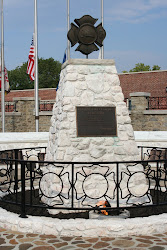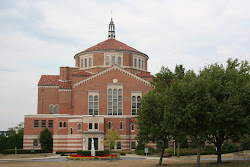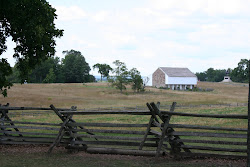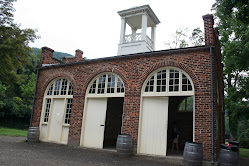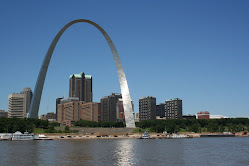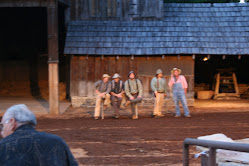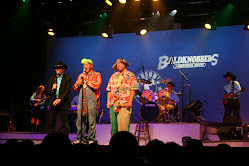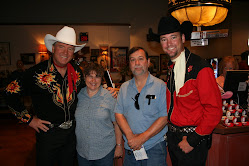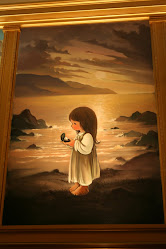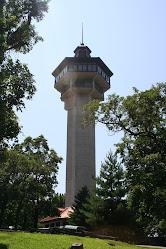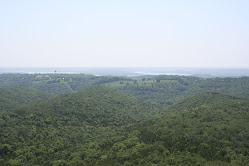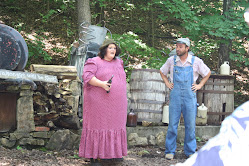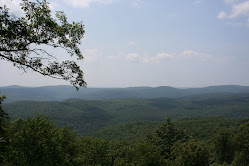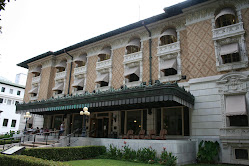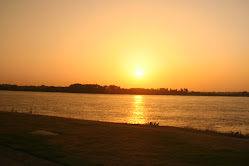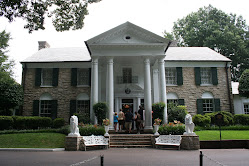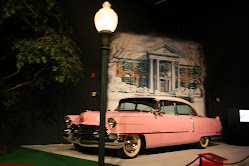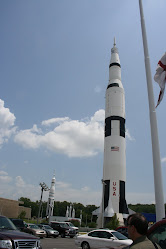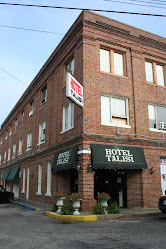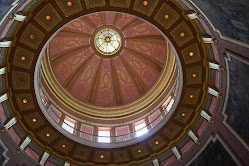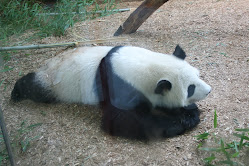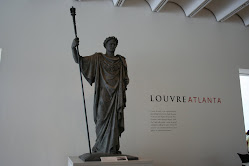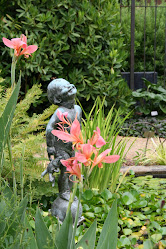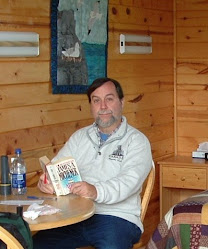

When you are driving 450-500 miles a day, you tend to fill in the hours with observations of the surounding environments and probably reading the information at the rest stops as they come along. That's where the mesa/butte/plateau debate started (scroll down to the beginning of these posts if you haven't read that scintillating discussion!)
So here's a few more additions to my new book, "Geologic formations observed driving from NJ to Alaska and back." Pictured to the left is a rock formation called a "Tor" (or a "High Tor" if you are Maxwell Anderson) (private joke to the dramaturgs among us). This is a volcanic formation, in this case above the Arctic Circle but visible elsewhere, where erosion has left dramatic rocks sticking up from the surrounding surface. They look really cool when they are completely surrounded by tundra or, in the plains states, grassy meadows.
The second picture is tundra, again above the Arctic Circle, and showing signs of impending autumn in the only way it can, since there are no trees. Tundra is an area of permafrost (i.e. permanent frost) so close to the surface that tree roots cannot take hold, so only shrubs, grasses, and sedges can grow.
A third formation, not pictured, was one I was totally unfamiliar with until we reached the rolling hills of Montana. I now understand why that state has the Spanish name for "mountain": it must have been extremely difficult for Lewis & Clark and future emigrants to cross this irregular terrain. I also maybe understand why they stopped their westward ho when, after going up and down these rolling hills, they saw the snowcapped peaks of the Rockies a few miles ahead. "Hey Ma, you know I was just thinking, we could probably settle right here, raise a few cattle or sheep - whaddaya think?"
OK, enough with the "rolling hills". Their proper names are Laccolith Domes: a rounded raised area, usually treeless, of about 50-100 feet in height. It's a Butte. When some of the rocks have been eroded, to reveal a ring of rocks about 1/3 of the way down the dome, it's known as a "Belted Butte".
Amazing what you learn when crossing this butte-T-full country. (Sorry, I could not resist.)











